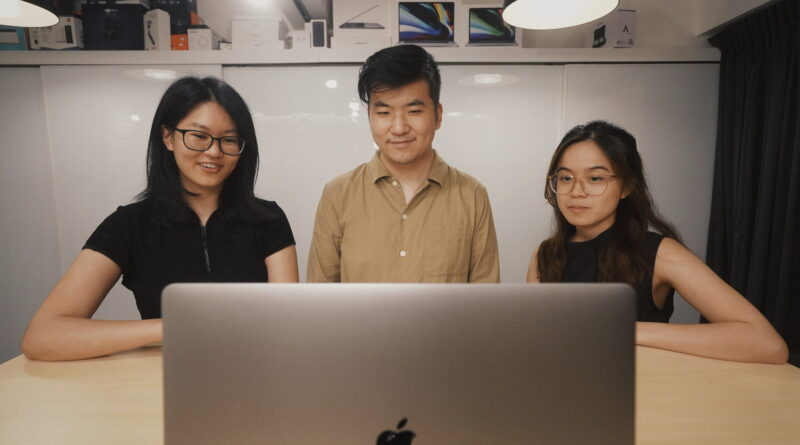Gen Z emerges as a new advocate for Traditional Chinese Medicine

The emergence of Generation Z as vocal proponents of traditional Chinese medicine (TCM) is unmistakably evident across various digital platforms. Short videos featuring demonstrations of the “Eight Brocades” exercise have amassed over 30 million views, accompanied by an impressive barrage of 33,000 comments. Moreover, the phenomenon of crowded massage departments in hospitals, predominantly filled with […]
Two New Drivers of Chinese Gen-Z Consumption: Wellness and Experience

With reports of lower Chinese consumer confidence filling headlines, we simultaneously see phrases such as “consumption upgrade” and “consumption downgrade” used to describe Chinese consumer behavior today, creating more confusion than clarity. What’s clear is that Chinese Gen-Z consumption is changing, uncovering new purchasing drivers. The term “consumption upgrade” rings back to 2016, when China’s […]
Guochao 3.0: Chinese cultural Renaissance in consumer trend

In the last 8 years, national confidence has exerted a significant influence on consumption trends in China. Within this changing landscape, Guochao (国潮 – lit. National Tide) has emerged. This trend is a reflection of the younger generation’s profound interest in China’s culture, traditions, and domestic brands, reflecting a cultural shift towards domestic products and […]
Gen Z are pursuing chill vibes (松弛感) on Chinese work culture: Is it time to say “bye” to 996?

Modern-day Chinese work culture is focusing on a strict hierarchical structure and long work hours. Clocking on an average 48.7 hours of work a week in 2023, Chinese employees are often compelled to make sacrifices for their employers. The IT sector in China is particularly infamous for its long work hours and lack of holidays. But as […]
Breaking boundaries: embracing Chinese genderless fashion trends

In 2022, the global gender-neutral clothing market is expected to experience significant growth, reaching a multimillion USD value by 2028 and this trend can be seen in China as well. The rise of the unisex clothing trend in China can be attributed to the increasing public attention on gender equality. This shift in gender concepts, […]
Citywalk: embracing urban charms and captivating Generation Z

diverse posts of Citywalk on Xiaohongshu with high views and likes
How young Chinese consumers are finding themselves

We analyzed the overarching trends of young Chinese consumer’s ambitions. To go beyond consumer trends and expose societal trends, we uncovered the correlations in consumer habits, social listening, in-depth interviews, and successful brand strategies. In this report we define young consumers as Chinese millennials and Gen-Z, or in Chinese terminology, the 90后 (those born after […]
Big tech and finance companies at the top of Gen Z’s work preferences in China despite 996

With the development of new technologies and their application in a wide range of fields, Internet has become a hot industry, attracting more and more Gen Z job seekers. Although the 996 work culture is primarily seen in big tech (such as Alibaba, Tencent or Huawei) and finance companies, Gen Z job seekers are still willing […]
The secrets to the 5 trillion CNY Chinese Gen Z market: Douyin and Guochao

China’s Gen Z consumers are still largely dependent on parents, yet they are some of the highest spenders in the country. At the same time, brands often underestimate the consumption ability of Chinese Generation Z because of their young age. According to the Chinese National Bureau of Statistics, the population size of Zoomers has reached 233 […]
Soul: The Chinese dating app that brings Gen-Z into the Metaverse
Founded in 2016, the Chinese algorithm-driven app Soul created a new-style social media metaverse dating app especially designed for the Generation Z. The app aims to provide users a free, safe, and fun environment to express their feelings and build connections through interest sharing and deep conversations. Unlike other dating apps and social networks, Soul […]
How established brands continue to attract young consumers in Hong Kong

Since the pandemic, the total retail sales of consumer goods in China have been greatly affected. From January to May 2022, the total retail sales of consumer goods amounted to 17.2 trillion yuan, a year-on-year decrease of 1.5%. The local epidemic has spread in many places, affecting most provinces in the country, and the operation […]
Chinese teenagers: understanding the needs of tomorrow’s consumers

Today’s Chinese teenagers were born during the one-child policy. The term “Little emperor syndrome” (小皇帝综合症) has been coined to label people born after 1980, since they have been receiving unrestrained attention and resources from parents and grandparents. A 2019 interview conducted by McKinsey revealed that 2/3 of Chinese consumers born after the 1990s receive half […]

